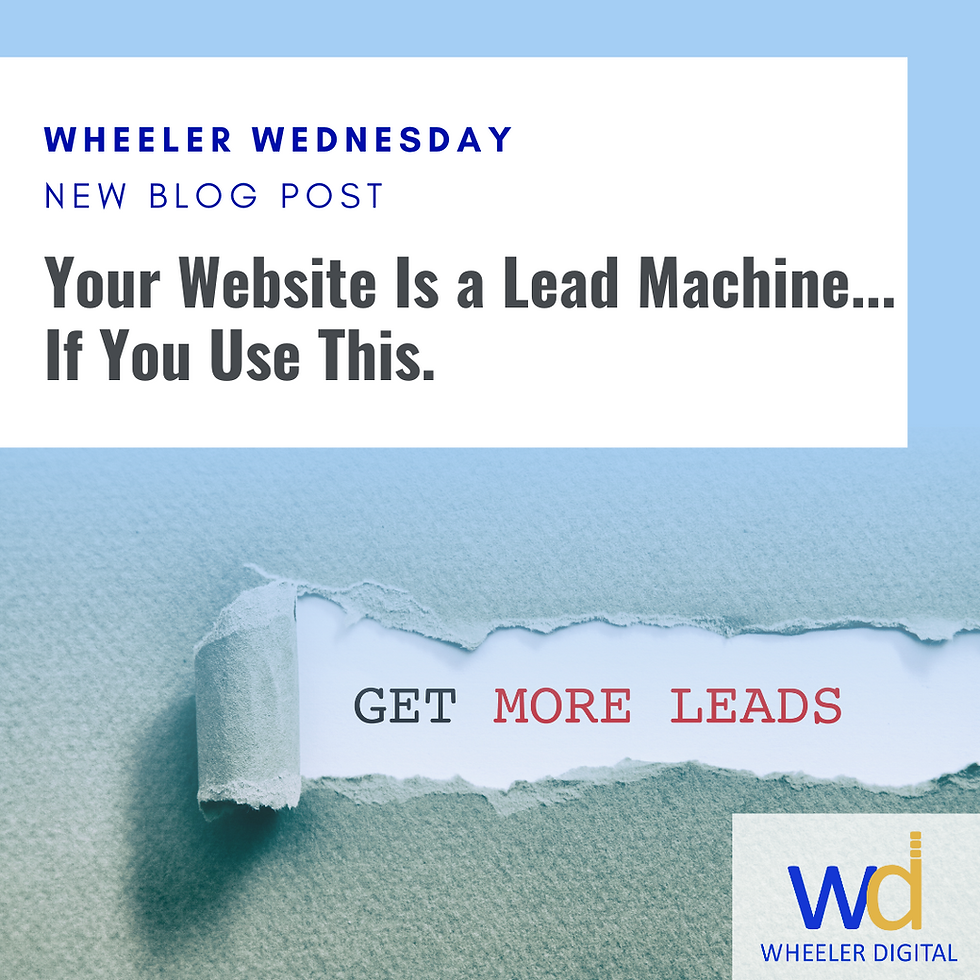How Nonprofits Can Maximize Their Growth with Digital Marketing in 2024
- cmay32
- May 6, 2024
- 3 min read

Between fundraising shortfalls, inflation and increased competition, 2024 is shaping up to be a vital year for nonprofits to achieve strategic growth and to nail their fundraising goals. And according to the expert members of the Forbes Nonprofit Council, the key to success this year and beyond lies in digital marketing and artificial intelligence – both of which will be touched on in this blog.
There are tons of exciting and powerful tools in the digital landscape that can help nonprofits grow, and Wheeler has had the opportunity to partner with tons of organizations of all sizes to customize digital strategies that make sense for their unique goals and challenges.
But one of the most popular tools for online giving, across the board, has been the use of Custom Audiences and Lookalike Audiences. Let’s break down some definitions:
A Custom Audience is a defined group of people who have interacted with your business. Whether it’s data from your CRM, a list of past donors, or a mailing list purchased from a service, that list of names, emails or phone numbers can be matched with a user’s online identity and ads can be served to that entire database on several platforms including Facebook/Instagram, Amazon, OTT/Pre-Roll, Mobile Conquesting and more! We like to describe it as Direct Mail for the internet, and it’s an incredibly effective way to target your list of potential donors or volunteers.
But how do you use your current database to find new people? That’s where Lookalike Audiences come in. Essentially, a lookalike audience is a group of people who share similar characteristics with your existing audience or customer base. These characteristics could include demographics, interests, behaviors, or other attributes. We build a lookalike audience from the initial database that you share with us.
Here's how lookalike audiences work:
1. Seed Audience: The process begins with a "seed audience" — this is typically a group of your existing supporters, donors, or customers. These individuals have already engaged with your organization in some way, whether by donating, attending events, or interacting with your content online.
2. Data Analysis: Once you have identified your seed audience, the next step is to analyze their characteristics. This analysis may involve examining demographic data (age, gender, location), interests, online behaviors, purchasing history, or any other relevant information that can help define your audience.
3. Pattern Recognition: Using advanced algorithms and machine learning techniques, digital marketing platforms like Facebook, Google Ads, or LinkedIn analyze the data of your seed audience to identify patterns and similarities among them. The platform looks for common traits and behaviors that distinguish your existing audience from the general population.
4. Creation of Lookalike Audience: Based on the insights gained from the analysis of your seed audience, the platform then generates a new audience — the lookalike audience. This audience consists of people who share similar characteristics with your seed audience but may not have interacted with your organization yet.
5. Targeting: Once the lookalike audience is created, you can target them with your digital marketing campaigns. You can use various targeting options provided by the platform to reach this audience, such as demographic targeting, interest targeting, or behavioral targeting.
6. Campaign Optimization: As your campaign runs, the platform continuously gathers data on the performance of your ads. By analyzing metrics such as click-through rates, conversions, and engagement, you can refine your targeting and messaging to further optimize the effectiveness of your campaigns.
7. Ongoing Process: Lookalike audience targeting is an ongoing process. As you collect more data and insights from your campaigns, you can refine your lookalike audience and improve the accuracy of your targeting over time.
Pretty cool, huh?! And the best part is, you can partner with a local organization of digital experts like Wheeler Digital to help you through these bizarre but effective technologies to help your nonprofit grow. Want to learn more about how we can help? How about some video testimonials from local nonprofits that we’ve already shown success to? You can check those things out right here.






Comments